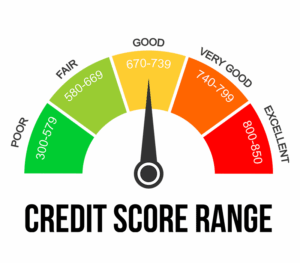A New Way for Cardholders to Use Their Charges
In an age when Americans are fighting increasing living costs as well as ballooning debt, one bill is actually trending for the right reasons. The Rate Cap Bill, which calls for limiting annual percentage rates (APRs) on credit cards to 10%, could change how credit functions in the U.S.

With the support of consumer advocates and members of both parties in Congress, the bill is intended to combat exorbitant lending and alleviate millions of Americans’ fed-up struggle to make ends meet between paychecks. But what, precisely, would this mean for the day-to-day credit card user?
Let’s break it down.
The Current Credit Card APR: What You Need to Know
Today, the average card APR is an estimated 22% to 25%, depending on the type of card and borrower. Some cards charge even more — interest north of 30% for those with bad credit or products with a variable rate.
These lofty rates are largely unpoliced, leaving banks free to set prices on the basis of their risk models, profit ambitions and prevailing market trends. Unlike personal loans or mortgages, which have fixed balances and interest rates, most credit cards carry revolving balances and compounding interest, which are among the most expensive forms of debt.
Now, think about cutting that APR to 10%.
How Much Might Consumers Save, in Reality?
According to a new study from Vanderbilt University, a credit card APR cap as low as 10% could save American consumers close to $100 billion per year. It’s not just a headline — it represents a seismic shakeup in household finances.
For instance, a borrower with a $5,000 balance at 25% APR may pay more than $1,000 in interest each year. With a cap at 10%, that interest would be about $500 — half as much.
That $10 to $30 a month is particularly meaningful for lower-income households, which tend to rely the most on credit cards to cover everyday expenses including groceries, rent and utilities.
Why Now? The Push for Reform
The Rate Cap bill is just one weapon in a larger push to advance fair lending as the economy struggles from pandemic-era financial strain, inflation spikes and increased public scrutiny over big banks.
The bill was introduced by Senator Josh Hawley (R-MO), who says it’s time to end the “predatory” practices of major credit card issuers. It helps the banks keep people in a cycle of debt, he argues, and “the banks make billions of dollars off cash advances and fees.”
This isn’t just political rhetoric. In 2023, banks collected more than $130 billion in interest from credit card users, Federal Reserve data shows.
Critics Warn That It Could Backfire. But Should It?
Not everyone, of course, is cheering.
Some big banks and even some economists say a 10 percent limit could have unintended consequences. Their key concern? That lenders were going to pull back, and credit standards would tighten, and subprime borrowers would not be able to get loans anymore.
If lending at interest is no longer profitable enough for banks, they could either:
Deny applications from high-risk borrowers,
Charge higher annual fees or cut back on reward programs,
Or reconsidering the roll out of new credit products all together.
But a bank could still profit under a capped system, the Vanderbilt researchers note — primarily through interchange fees (the fees that merchants pay to process transactions), which account for a substantial revenue stream.
What It Could Mean for Credit Card Issuers
This bill may force credit card issuers to fundamentally reevaluate their business strategy.
Companies that are highly dependent on interest income from revolving balances may not fare as well. But those that have diversified into fees, partnerships, rewards and co-branded cards may find it easier to adapt.
Some issuers may begin marketing fixed-rate personal loans or buy-now-pay-later (BNPL) options to get around _particularly for those higher-risk borrowers. That means innovation but also possibly reduction in perks and access for some consumers.
A Win for Responsible Borrowers?
There is one upside nobody has talked about enough: This bill could be a reward for financial discipline.
With less APR legal overhead, borrowers who pay over the minimum — or attempt to whittle down debt aggressively — would make faster progress and save quite a bit over time. It could also cut down on the general stigma and anxiety associated with carrying a balance, both knowing that it’s not being charged exorbitant interest rates.
What Should Cardholders Do Now?
Though the Rate Cap Bill still has a long way to go in Congress, its momentum is such that cardholders should get ready for what may be coming.
Here’s what you can do:
Know Your APR: Review the interest rate of your existing cards. If you’re over 20%, check out balance transfer offers or low-rate cards now.
TRACK THE BILL: Keep an eye on the Rate Cap Bill through financial news or congressional trackers.
Pay Down Debt: Utilize this time as inspiration to bring down high-interest balances in the event of a credit crunch.
Diversify Credit Options: Consider installment loans or credit unions, both of which generally provide better rates and more flexible terms.
Final Thoughts
Pass or fail, the Rate Cap Bill has already sparked an important national conversation about the true cost of credit.
You don’t often come across a policy proposal that would directly affect so many aspects of the economy, from ordinary consumers to Wall Street banks or even Australian pension funds, in such a substantial manner. For credit card holders, this may entail a future in which financing is more affordable, transparent and fair.
But the devil, here as everywhere with an economic reform, is in the fine print — and execution.
Stay informed. Stay proactive. And ensure your credit strategy can withstand anything that comes next.
Our Post

High Interest Rates, Credit Cards and the U.S. Consumer: What to Know in 2025
The Note: How Decelerating U.S. Economic Growth Affects Using Consumer Credit


